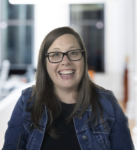
Decades ago, addiction recovery professionals took a much simpler view of recovery than we do today. Recovery for addiction was itself a fairly new idea, as was understanding mental illness as something treatable. There was still no deep comprehension of the many connections between mental health issues and substance abuse; why would anyone lump those things together for treatment?
These days, ideas have evolved, and we now know so much more about co-occurring disorders—that is, the situation in which a person has at least one substance abuse disorder and at least one mental health disorder. Now it is clear that addressing only part of the problem leads to failures in treatment while addressing all substance abuse and mental health disorders together as part of a holistic approach is far more likely to succeed.
Many kinds of rehabilitation are now available for those who need professional help with substance abuse, whether or not mental health appears to be part of the problem. The possibilities for treatment differ greatly in their focus, length, and approach. It can feel difficult to really tease out the best choices, but it’s critically important not to select a treatment program randomly, or merely based on something arbitrary, such as location alone.
The better practice is to research all of the options. Your individual needs are not going be the same as everyone else who is searching for a treatment option, so make sure you’re getting them met. This includes ensuring that any facility will be equipped to handle not just your substance abuse needs, but also anything related to your mental and emotional health. Integrated treatment is typically the best way to treat co-occurring disorders and the most likely route to success.
What Are Co-Occurring Disorders?
Co-occurring disorders, formerly called dual diagnosis, describes the condition of having more than one kind of disorder. Most commonly, it refers to a person with both a substance use and a mental health disorder. For example, a person could have an opioid addiction and might also have post-traumatic stress disorder. However, it can also refer to someone with, for example, an addiction and an intellectual disability.
One important distinction to make here is that co-occurring disorders only exist if at least one disorder of each kind exists independently. In other words, you wouldn’t call a cluster of symptoms caused by another disorder an independent disorder. For example, if an alcohol addict was experiencing alcohol-induced dementia or delusions, dementia and/or delusions would not be part of an independent mental disorder. Instead, they would be secondary to the alcohol addiction.
The Complexities of Co-Occurring Disorders
Some of the more common forms co-occurring disorders include alcohol addiction with panic disorder; and alcohol and poly-drug addiction with schizophrenia; cocaine addiction with major depression; and episodic poly-drug abuse with borderline personality disorder. You can look at these examples and see a relationship between symptoms and behaviors related to one issue and those symptoms and behaviors related to the other.
A frequent pattern to notice is symptoms that cause stress or other stimulating emotions co-occurring with addictions to depressants—substances that take the edge off of those feelings. The flip side of that coin is symptoms that cause feelings of depression, lethargy, fatigue, or apathy co-occurring with addictions to stimulants which, again, ease those feelings. You might expect to see more polysubstance abuse co-occurring with disorders that have a broader range of symptoms—because solely stimulants or depressants isn’t enough to curb them. Of course, there is there is great variability among co-occurring disorders and no single way they combine.
Another wrinkle that adds complexity to the treatment of co-occurring disorders is the fact that a person’s substance-use and psychiatric disorders may differ chronicity, severity, degree of impairment in functioning, and overall disability. For example, one could have a severe alcohol-use disorder and a less severe case of post-traumatic stress disorder, or an intermittent, mild club drug use disorder and a severe bipolar disorder with psychotic features. Furthermore, each disorder can change over time, so their severity and levels of impairment in functioning and disability can fluctuate as things change.
Heightened Risk for People With Co-Occurring Disorders
Those who suffer from co-occurring disorders are at heightened risk for a range of additional problems, including family problems, financial problems, homelessness, hospitalizations, incarceration, physical and sexual victimization, severe medical problems such as hepatitis B and C and HIV, social isolation, symptomatic relapses, suicide, violence, and premature death. Even a single one of these issues makes treating co-occurring disorders very complicated.
One of the greatest challenges people with co-occurring disorders face is more chronic and serious emotional, medical, and social problems than their peers who are fighting only one kind of disorder. Coping with two or more disorders leaves a patient more vulnerable to both worsening psychiatric symptoms and addiction relapse. Additionally, each worsening psychiatric symptoms and addiction relapse can worsen the other, so each of these patients is starting in the middle of a vicious cycle.
To end that cycle, addiction treatment attempts must design relapse prevention efforts specifically to meet the unique needs of those suffering from co-occurring disorders. This can mean more setbacks during treatment, a longer period of time devoted to treatment, and more gradual progress throughout the course of treatment.
Symptoms
In 2014, almost 8 million adults in the US struggled with co-occurring disorders. In other words, they’re fairly common—but that doesn’t mean they’re easy to spot. Because the symptoms of co-occurring disorders include those from both a psychiatric and a substance-use disorder, it’s easy for symptoms of one disorder to hide or “mask” another.
Substance use devolves into substance abuse as the person maladapts to substance-related problems—even those that are significant. For example, the drive to continue to use despite clear health problems, legal risks, job loss, and related issues arises as a sign of substance-use disorder. Even when there is some question about whether use is tantamount to abuse, it is critical to understand that chronic use of illegal substances will present a major treatment issue regardless.
Causes
Environmental and biological factors often produce substance-abuse and mental health disorders. Each type of disorder is a dynamic process, which can differ greatly in how it manifests symptoms, how quickly it progresses, and how severe it becomes.
Environment, genetic susceptibility, and pharmacologic influences all influence both kinds of disorder greatly. In fact, each person has a different level of risk for these kinds of mental health and addiction disorders, depending on the situation. For example, some environments can produce, draw out, or help maintain disorders; this is environmental risk. Some people have an unusually high genetic risk for either or both kinds of these disorders. Furthermore, certain substances are more likely to produce addiction and psychiatric disorders when used; these carry higher pharmacologic risk.
Benefits of Integrated Treatment
The Substance Abuse and Mental Health Services Administration (SAMHSA) of the U.S. Department of Health and Human Services recommends integrated treatment as a more effective, targeted approach for people with co-occurring disorders. The American Psychiatric Association also recommends integrated treatment, as does the American Psychological Association. In fact, this coordinated approach to healthcare that integrates treatment and interventions for mental health and substance-abuse, instead of treating each disorder separately, has now become the gold standard.
Benefits of integrated treatment may include the following:
- Assist patients in understanding the role that substances play in their life—this arises from a psychological/psychiatric approach to the substance abuse as well as the mental health issue.
- Provides patients with a chance to learn about how substances interact with the mental illness disease process and with other medications—and use these issues as the backdrop for exploring their own substance use.
- Offers therapy designed specifically for the unique needs of people with co-occurring disorders, whether that counseling takes place in individual, group, or family sessions, or in a mix of these.
- Help patients into recovery by providing more holistic support services, such as employment assistance.
- Assists patients in identifying individualized recovery goals and learning how recovery from each illness will work.
The integrated strategies that achieve the most success for clients with co-occurring disorders include cognitive-behavioral therapy (CBT), contingency management, interventions, motivational interviewing, and relapse prevention. There is no one right kind of treatment plan; co-occurring disorders mandate an individualized approach while sharing several broad, basic traits:
- Treatment must take on both mental health and addiction issues, and address the various needs of the patient
- Treatment should include any necessary medication
- Treatment must acknowledge that many who deal with addiction also have mental health issues
- Treatment must be assessed periodically to ensure the proper care is being given and to ensure the plan is modified as needs or goals change
Learn More About Integrated Treatment at Casa Palmera
Co-occurring disorders are complex, and potentially life-threatening; don’t try to handle them alone. It’s easy to feel like a situation is hopeless, but integrated treatment works for many people who are coping with similar issues. If co-occurring disorders are causing you or a loved one to suffer, or you just aren’t sure, contact Casa Palmera online, or call us toll-free at 888-481-4481.




